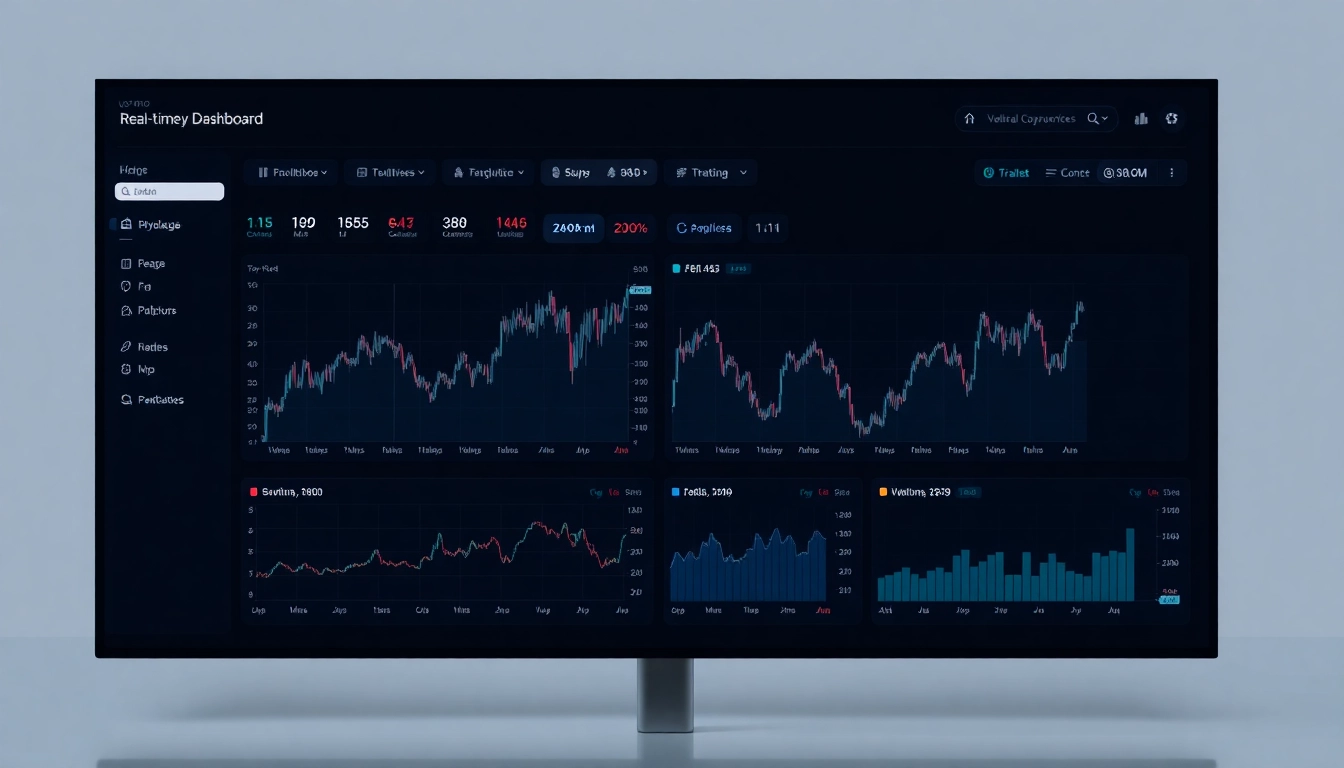Introduction to Freelance React Development
In recent years, React has solidified its position as the leading JavaScript library for building dynamic, scalable, and performant user interfaces. For freelancers, React offers an unprecedented opportunity to tap into a thriving market of high-paying projects across various industries and regions. As we progress through 2024, the freelance freelance react landscape continues to evolve, driven by technological advancements, remote work trends, and an increasing demand for modern web applications. Understanding the current environment is essential for both novice and seasoned freelancers looking to maximize their earning potential and establish a sustainable career in React development.
Understanding the freelance React landscape in 2024
The freelance React market is highly competitive but equally rewarding. According to recent data from JobForFreelancers, there are hundreds of active React-related projects available across France’s main tech hubs, with daily rates ranging from €600 to €1200 depending on expertise and project complexity. Remote opportunities constitute approximately 40% of all React gigs, reflecting the global shift toward flexible working arrangements. Projects vary from small website updates to complex enterprise applications, providing diverse options for freelancers at different skill levels.
Key skills and tools for React freelancers
To stand out, React freelancers must possess a blend of technical prowess and soft skills. Core competencies include mastery of React fundamentals—hooks, context API, state management, and component architecture—along with proficiency in related tools like Redux, React Router, and testing frameworks such as Jest. Familiarity with CSS-in-JS solutions, TypeScript, and build tools like Webpack or Vite enhances marketability. Complementary skills in HTML, CSS, backend integrations, and DevOps practices are also highly valued. A client-centric approach, timely communication, and effective project management are vital soft skills that contribute to long-term success.
Why React remains a top choice for freelance projects
React’s widespread adoption by leading companies like Facebook, Instagram, and WhatsApp underscores its robustness and scalability. Its component-based architecture facilitates reusable code, faster development cycles, and easier maintenance, making it ideal for freelance projects that demand quick turnaround times. Additionally, the extensive React ecosystem offers a rich library of third-party solutions, reducing development effort and costs. As new features such as concurrent mode and server components mature, React continues to attract high-budget, innovative projects. This sustained innovation, coupled with strong community support, ensures React remains a top choice for freelance developers aiming for lucrative assignments.
Building a Competitive Freelance React Portfolio
Showcasing your React projects effectively
Your portfolio is your digital storefront. To attract premium clients, showcase a diverse range of React projects that demonstrate technical mastery, problem-solving skills, and design sensibility. Include case studies with clear objectives, challenges faced, solutions implemented, and measurable outcomes. Use high-quality screenshots, live demo links, and concise descriptions that highlight your role and impact. Demonstrating experience with scalable architectures, performance optimization, and cross-browser compatibility can differentiate you from less experienced competitors.
Creating a compelling personal website and profiles
Your personal website should serve as a comprehensive hub detailing your skills, certifications, and portfolio. Incorporate a professional tone with a clean, responsive design, emphasizing user experience. Optimize your LinkedIn, GitHub, and Upwork profiles with targeted keywords such as “React developer,” “Front-end specialist,” and geographic tags like “Paris” or “Lyon.” Regularly update these profiles with fresh projects, articles, or tutorials to demonstrate thought leadership and ongoing learning.
Gathering testimonials and certifications to enhance credibility
Client testimonials boost your credibility significantly. Request feedback after project completion and showcase these reviews prominently on your website and profiles. Additionally, earning certifications such as the React Developer certification from recognized institutions, or participating in industry bootcamps, certifies your expertise and reassures clients of your professionalism.
Finding and Winning High-Paying React Freelance Jobs
Best platforms and channels for React freelance opportunities
Leading freelance platforms like JobForFreelancers, Upwork, Toptal, and Freelancer provide access to premium React projects. JobForFreelancers, in particular, curates highly targeted job listings, allowing you to filter projects by technology, location, and budget. Engaging with local tech communities, attending industry meetups, and leveraging social media channels (LinkedIn, Twitter) can also open doors to direct client relationships. Building relationships with agencies that specialize in digital transformation projects often leads to recurring, high-paying gigs.
Crafting tailored proposals that highlight your expertise
A compelling proposal directly addresses client needs. Start with a personalized introduction that reflects understanding of their project. Highlight your relevant experience, showcase similar projects, and suggest specific solutions. Quantify your expected deliverables and timeline. Use facts and figures to demonstrate your value—e.g., faster development cycles, optimized performance, or reduced costs—tailoring each proposal to align with the client’s objectives.
Negotiating rates and managing client expectations for maximum value
Negotiation is key. Base your rates on your experience, project complexity, and market demand, ensuring alignment with the high-paying segment (€600–€1200/day). Be transparent about your value proposition and flexible regarding scope to reach fair terms. Build ongoing relationships by managing client expectations early, delivering quality on schedule, and providing clear communication channels. Successful negotiation often translates into long-term collaborations and referral opportunities.
Maintaining Success and Growing Your React Freelance Career
Staying current with React updates and industry trends
Continuous learning is vital. Follow official React updates, subscribe to newsletters (e.g., React Status), and participate in webinars or conferences. Explore adjacent technologies like Next.js for server-side rendering, React Native for mobile development, or GraphQL for efficient data fetching. Staying ahead allows you to offer innovative solutions and command premium rates.
Scaling your freelance business with diverse tech skills
Diversify your skill set to include backend technologies (Node.js, GraphQL), UI/UX design, or DevOps practices. Offering full-stack solutions or consulting services increases your project scope and income potential. Automating workflows with CI/CD pipelines, using containerization, and employing project management tools (Jira, Trello) streamline delivery, enabling you to handle larger, more complex projects.
Building long-term relationships with clients for recurring projects
Developing trust through consistent quality and professionalism results in repeat business. Implement regular check-ins, deliver beyond expectations, and provide ongoing support. Creating retainer agreements and maintenance plans can ensure a steady stream of income and deepen client loyalty.
Optimizing Workflow and Ensuring High-Quality Delivery
Integrating best practices for remote React development
Remote work demands discipline. Adopt version control (Git), code reviews, and modular architectures to facilitate collaboration. Establish clear communication channels with clients via Slack or Teams. Set regular milestones and use visual tools like Figma or Adobe XD for design collaboration.
Utilizing collaboration tools and project management software
Tools such as Jira, Trello, or Asana help organize tasks and track progress efficiently. Incorporate automated testing and CI/CD pipelines with tools like Jenkins or GitHub Actions to ensure consistent quality. Time-tracking software (Toggl, Clockify) assists in accurate billing and productivity monitoring.
Achieving client satisfaction and positive reviews for continued success
Clear communication, adhering to deadlines, and exceeding expectations foster positive reviews. Consistently documenting milestones and deliverables promotes transparency. Happy clients often provide referrals, testimonials, and long-term engagements, fueling your career growth.



